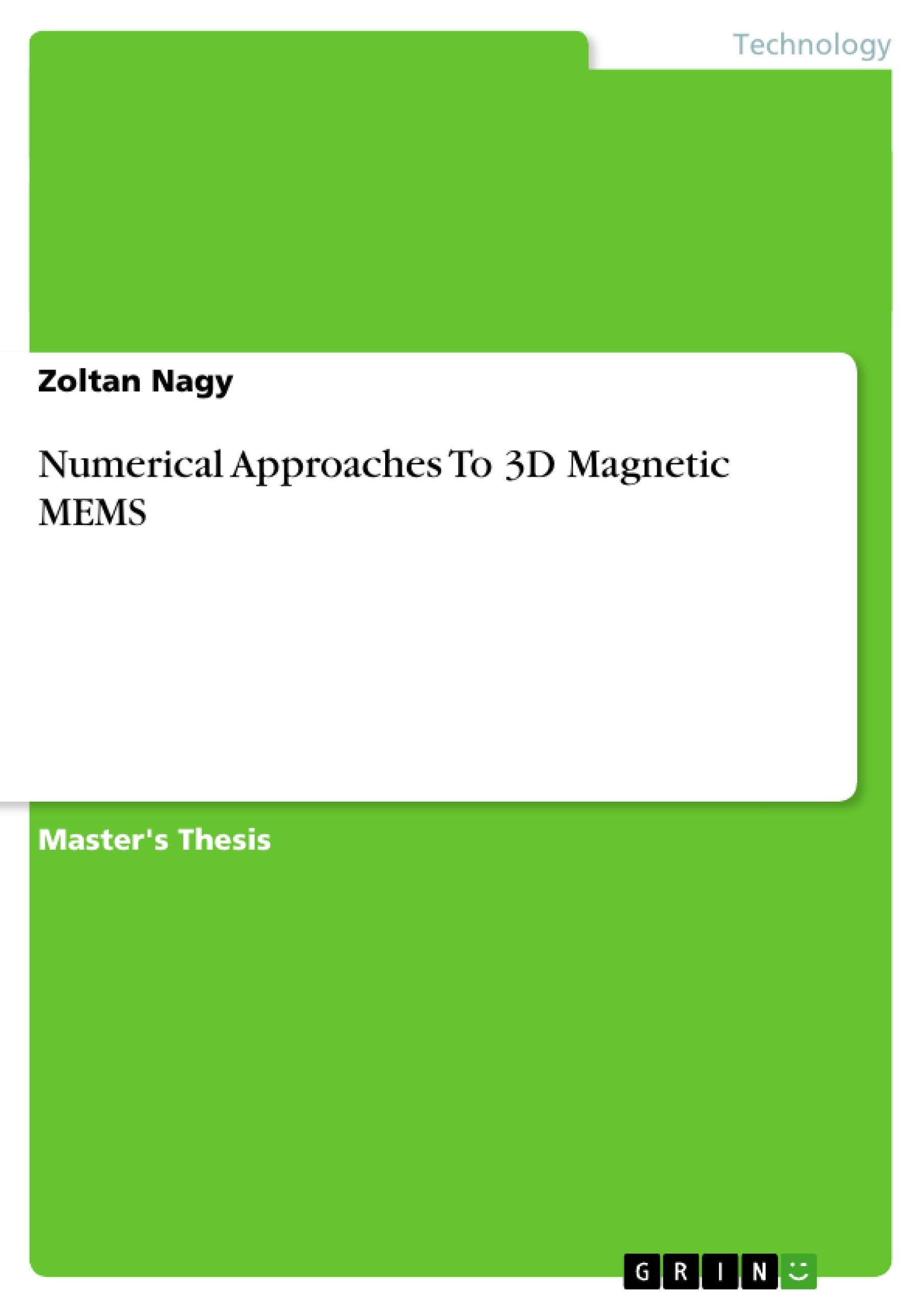The present work investigates the potential of the finite element method (FEM) in the design process of magnetic Micro-Electro-Mechanical-Systems (MEMS). The magnetic forces and torques acting on a magnetic body are of great importance in wireless actuating principles. Good models are required to allow for precise and predictable motion of the magnetic body. However, analytical results are only available for simple geometries and experiments are often time consuming and may have a certain number of uncertain parameters that may influence the results. Numerical methods, and in particular the finite element method, offer the possibility to study a magnetic body with known material properties in a well defined environment.
Consequently, in this work, a method is proposed to calculate the net body torque on arbitrarily shaped bodies in a homogeneous magnetic field using the commercial finite element software Ansys . In addition, a procedure to de- termine the demagnetization factors of these bodies is given. The code is first validated by the known analytical results for an ellipsoid. As an application, the demagnetization factors, as well as the net magnetic torque on brick shaped bodies and the IRIS Microrobot are calculated. A method is proposed to predict the torque acting on the Microrobot analytically. However, experimental results are necessary to confirm this method.
Furthermore, Ansys is used to model magneto-structural coupling that is, the motion and deformation of a magnetic body due to an external magnetic field. Two devices are presented (as case studies rather than as actual design concepts), the magnetic resonator and the magnetic scratch drive actuator (MSDA). A quasi- analytical model for the static deflection of the magnetic resonator is given and good agreement with the finite element model is obtained. The MSDA is modeled to show the potential of Ansys in modeling MEMS devices, as additional to the coupling effects, contact elements and spring elements are introduced. Again, experimental results are required.
Inhaltsverzeichnis (Table of Contents)
- Preface
- Abstract
- Chapter 1: Introduction to Magnetic MEMS and Numerical Methods
- 1.1 Motivation and Objectives
- 1.2 Finite Element Method (FEM)
- 1.3 Application to Magnetic MEMS
- Chapter 2: Calculation of Net Body Torque
- 2.1 Methodology
- 2.2 Validation with Ellipsoid
- 2.3 Application to Brick-Shaped Bodies and IRIS Microrobot
- 2.4 Analytical Prediction of Microrobot Torque
- Chapter 3: Magneto-Structural Coupling
- 3.1 Magnetic Resonator
- 3.2 Magnetic Scratch Drive Actuator (MSDA)
Zielsetzung und Themenschwerpunkte (Objectives and Key Themes)
This diploma thesis explores the application of the finite element method (FEM) in the design process of magnetic Micro-Electro-Mechanical-Systems (MEMS). The primary objective is to develop and validate a numerical method for calculating magnetic forces and torques on arbitrarily shaped magnetic bodies, particularly focusing on the challenges of wireless actuation in MEMS.
- Application of FEM to magnetic MEMS design
- Calculation of net body torque on arbitrarily shaped bodies
- Determination of demagnetization factors
- Modeling magneto-structural coupling
- Analytical and numerical modeling comparison
Zusammenfassung der Kapitel (Chapter Summaries)
Chapter 1: This chapter introduces magnetic MEMS and their design challenges, highlighting the limitations of analytical methods and the advantages of using numerical techniques such as FEM. It lays the groundwork for applying FEM to the specific problem of modeling magnetic forces and torques in MEMS.
Chapter 2: This chapter details the proposed method for calculating the net body torque using ANSYS software. It describes the validation process using known analytical results for an ellipsoid and then applies the method to calculate the torque on brick-shaped bodies and the IRIS Microrobot. An analytical prediction method for the microrobot torque is also introduced.
Chapter 3: This chapter focuses on magneto-structural coupling, modeling the motion and deformation of a magnetic body under an external magnetic field. Two case studies are presented: a magnetic resonator and a magnetic scratch drive actuator (MSDA). A quasi-analytical model for the static deflection of the resonator is developed and compared to the FEM results.
Schlüsselwörter (Keywords)
Magnetic MEMS, Finite Element Method (FEM), Magnetic forces and torques, Demagnetization factors, Magneto-structural coupling, Wireless actuation, ANSYS, Microrobot, Magnetic resonator, Magnetic scratch drive actuator (MSDA).
- Arbeit zitieren
- Zoltan Nagy (Autor:in), 2006, Numerical Approaches To 3D Magnetic MEMS, München, GRIN Verlag, https://www.grin.com/document/183339



